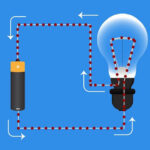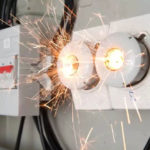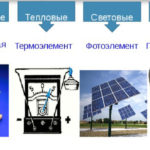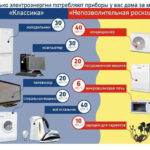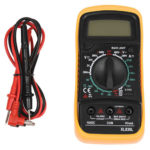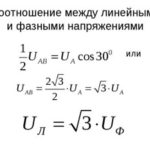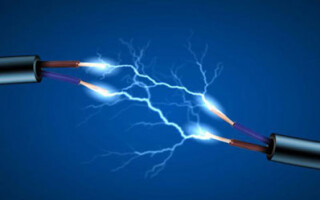In today's world, everyone has been confronted with electricity since childhood. The first mentions of this natural phenomenon date back to the days of the philosophers Aristotle and Thales, who were intrigued by the amazing and mysterious properties of electric current. But it wasn't until the 17th century that great scientific minds began a series of discoveries concerning electrical energy that continue to this day.
The discovery of electric current and Michael Faraday's creation of the world's first generator in 1831 radically changed human life. We are used to having appliances that use electrical energy to make our lives easier, but until now, most people have no understanding of this important phenomenon. To begin with, to understand the basic principles of electricity, we need to study two basic definitions: electric current and voltage.
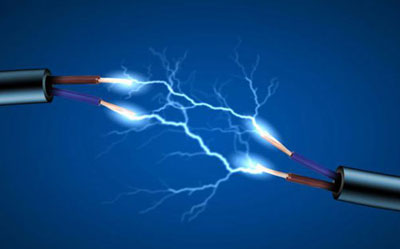
Contents
What is Electric Current and Voltage
Electric current - is the ordered motion of charged particles (carriers of electric charge). The carriers of electric current are electrons (in metals and gases), cations and anions (in electrolytes), holes in electron-hole conduction. This phenomenon is manifested by the creation of a magnetic field, by a change in the chemical composition or by heating of conductors. The main characteristics of current are:
- amperage, determined by Ohm's law and measured in Amperes (Аin the formulas is designated by the letter I;
- power, according to the Joule-Lenz law, measured in watts (W), is denoted by the letter P;
- frequency, measured in hertz (Hz).
Electric current as an energy carrier is used to obtain mechanical energy by means of electric motors, to obtain thermal energy in heating devices, electric welding and heaters, to excite electromagnetic waves of various frequencies, to create magnetic fields in electromagnets and to obtain light energy in lighting devices and various kinds of lamps.
Voltage - is the work done by an electric field to move a charge of 1 coulomb (kl) from one point of a conductor to another. Based on this definition, it is still difficult to understand what voltage is.
In order to move a charged particle from one pole to the other, a potential difference must be created between the poles (this is what is called a voltage). The unit of measurement of voltage is the volt (В).
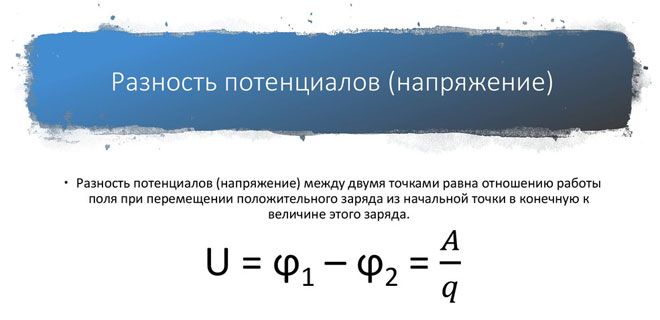
For a final understanding of the definition of electric current and voltage, an interesting analogy can be made: imagine that the electric charge is water, then the pressure of water in the column is the voltage, and the speed of water flow in the pipe is the strength of the electric current. The higher the voltage, the greater the strength of the electric current.
What is alternating current
If you change the polarity of the potentials, the direction of electric current flow changes. It is this kind of current that is called alternating current. The amount of change in direction over a period of time is called frequency and is measured, as mentioned above, in hertz (Hz). For example, in a standard electrical network in our country, the frequency is 50 Hz, which means that the direction of the current changes 50 times per second.
What is direct current
When the ordered motion of charged particles has always only one direction, such a current is called direct current. Direct current occurs in a direct voltage network when the polarity of the charges on one side and the other side is constant over time. It is very often used in a variety of electronic devices and techniques when it is not necessary to transfer energy over long distances.
Sources of electric current
A source of electric current is usually a device or device that can be used to create an electric current in a circuit. Such devices can create alternating current as well as direct current. They are divided into mechanical, light, thermal, and chemical in terms of how they create electrical current.
Mechanical Electric current sources convert mechanical energy into electrical energy. Such equipment is represented by different kinds of generatorswhich generate alternating electric current by rotating an electromagnet around the coil of induction motors.
Light sources convert the energy of photons (light energy) into electrical energy. They use the property of semiconductors to produce voltage when exposed to light flux. Solar panels can be referred to such equipment.
Thermal - Converts heat energy into electricity due to the temperature difference between two pairs of contacting semiconductors - thermocouples. The amount of current in such devices is directly related to the temperature difference: the greater the difference - the greater the current strength. Such sources are used, for example, in geothermal power plants.
Chemical The current source produces electricity as a result of chemical reactions. For example, various kinds of galvanic batteries and accumulators can be referred to such devices. Galvanic current sources are typically used in stand-alone devices, automobiles, appliances, and are DC current sources.
Converting alternating current to direct current
Electrical devices in the world use both direct and alternating current. Therefore, there is a need to convert one current into the other or vice versa.
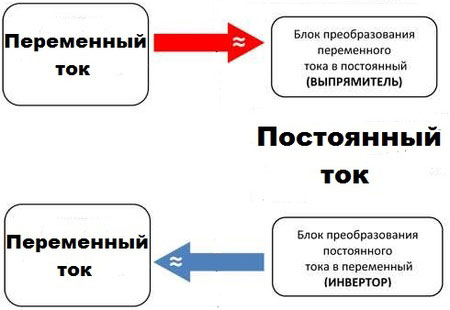
From alternating current, direct current can be obtained by using a diode bridge, or "rectifier" as it is also called. The main part of a rectifier is a semiconductor diode, which conducts the electric current in one direction only. After this diode, the current does not change its direction, but there are ripples, which are eliminated by capacitors and other filters. Rectifiers come in mechanical, vacuum or semiconductor designs.
Depending on the quality of manufacture of such a device, the ripple current at the output will have different values, as a rule, the more expensive and better made device - the less ripple and cleaner the current. Examples of such devices are power supplies various appliances and chargers, rectifiers of electric power units in various modes of transport, DC welders, and others.
Inverters are used to convert direct current into alternating current. Such devices generate an alternating voltage with a sine wave. There are several types of such devices: inverters with electric motors, relay and electronic. They all differ in the quality of the alternating current they produce, their cost, and their size. Examples of such a device are uninterruptible power supplies, inverters in cars or in solar power plants, for example.
Where AC and DC power is used and what are the advantages
Various tasks may require the use of both alternating current and direct current. Each type of current has its own disadvantages and advantages.
Alternating current is most often used when there is a need to transmit current over long distances. This type of current is more appropriate in terms of possible losses and the cost of equipment. That is why most appliances and machinery use only this type of current.
Houses and businesses, infrastructure and transport facilities are located at a distance from power plants, so all electrical networks are alternating current. Such networks power all household appliances, industrial equipment, and train locomotives. There are an incredible number of AC powered devices and it is much easier to describe those that use direct current.
Direct current is used in autonomous systems such as on-board systems in cars, aircraft, ships, or electric trains. It is widely used in powering microcircuits in various electronics, communications and other applications where interference and ripple are to be minimized or eliminated altogether. In some cases, such current is used in electric welding works with the help of inverters. There are even railway locomotives that are powered by direct current systems. In medicine, such current is used to introduce drugs into the body by electrophoresis, and for scientific purposes to separate various substances (protein electrophoresis, etc.).
Symbols on electrical devices and circuits
There is often a need to determine what current the device is running on. After all, connecting a DC-operated device to an AC mains supply will inevitably lead to unpleasant consequences: damage to the device, fire, electrical shock. For this reason, there are internationally-accepted conventions for such systems and even color-coded wires.

Conventionally, appliances running on direct current are marked with one line, two solid dashes or a solid line together with a dotted line under each other. Such currents are also indicated by marking with Latin letters DC. Electrical wire insulation in DC systems is colored red for the positive wire and blue or black for the negative.
On electrical apparatus and machines, alternating current is indicated by the English abbreviation AC or a wavy line. In diagrams and device descriptions, it is also indicated with two lines: a solid line and a wavy line under each other. The conductors are in most cases marked as follows: phase in brown or black, ground in blue, and ground in yellow-green.
Why AC is used more often
Above, we've already talked about why alternating current is used more often than direct current these days. Still, let's take a closer look at this question.
The debate about which current is better to use has been going on since the discovery of electricity. There is even such a thing as a "war of currents"-the confrontation between Thomas Edison and Nikola Tesla over the use of one type of current. The struggle between the followers of these great scientists lasted until 2007, when the city of New York was switched to alternating current from direct current.

The most important reason alternating current is used more often is the ability to transmit it over long distances with minimal losses. The greater the distance between the current source and the end user, the greater the resistance of the wires and the heat loss from the wires.
In order to get the maximum power it is necessary to increase either the thickness of the wires (and thereby reduce the resistance), or to increase the voltage.
In AC systems, it is possible to increase the voltage with a minimum wire thickness, thus reducing the cost of the electrical lines. For direct current systems, there are no affordable and efficient ways to increase the voltage, so for such networks it is necessary either to increase the thickness of the conductors or to build a large number of small power plants. Both of these methods are expensive and significantly increase the cost of electricity compared to AC networks.
With electrical transformers, AC voltage is efficiently (with an efficiency of up to 99%) can be varied in any direction from minimum to maximum values, which is also one of the important advantages of AC networks. Using a three-phase AC system further increases efficiency, and mechanisms such as motors that operate on AC power grids are much smaller, cheaper and easier to maintain than DC motors.
Based on all of the above, we can conclude that the use of alternating current is beneficial in large networks and in the transmission of electrical energy over long distances, while for the accurate and efficient operation of electronic devices and for autonomous devices it is advisable to use direct current.
Related articles:
